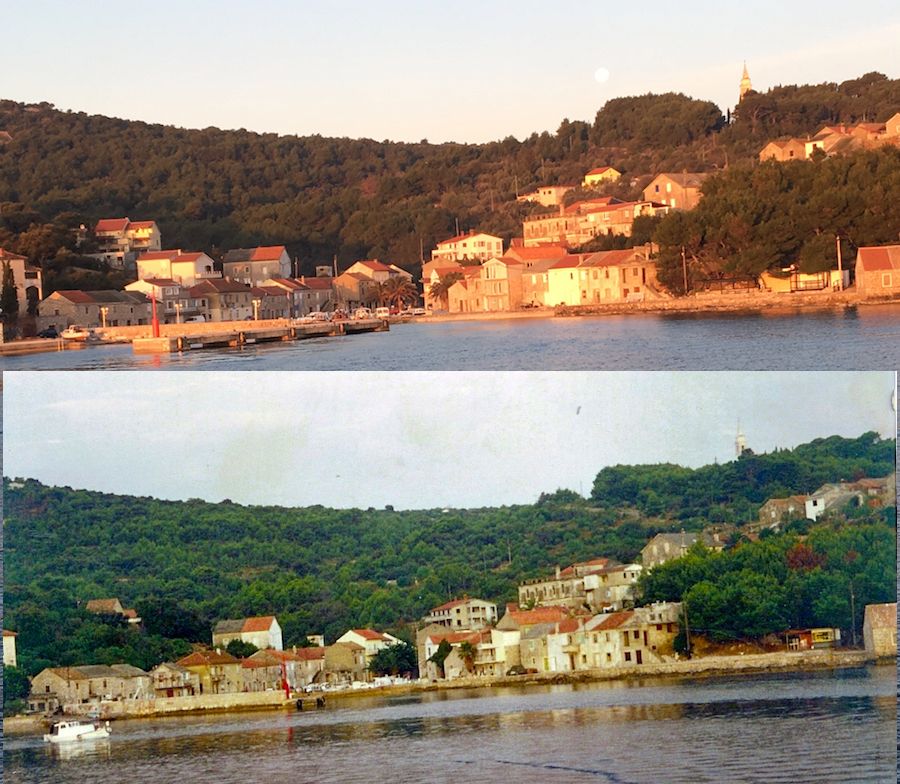May 29, 2018 - One would think switching from a city of 8 million people to a village of 215 offers a culture shock. Well...
"You're not from here, are you? Where did you come from?"
I sigh, answer and then brace myself.
The questions come at a Gatling gun-pace, following a predictable pattern.
“You moved from New York City to here?” the inquisitor asks, unaware of the alienation their question instantly induces. They stare aghast at the village I call home, Mali Iž. Our decrepit school building, decaying roads, and collapsing roofs. The place seems abandoned, crumbling. Empty. The sort of place real estate agents can only market as "quiet and safe."
They then stare back at me, seeking any hidden signs of illness. My decision to leave the Big Apple for Little Iž remains an odd addendum to my otherwise-unremarkable biography.
“That must have been a big change, eh?” they add in a faux amusement meant to disguise confusion. They think they've deciphered the difference between there and here.
Yes, Mali Iž and NYC seem as similar as a graveyard and a circus. But a more nuanced look reveals a few things haven't changed at all for me.
I can hear you ask, “He’s not going to say New York and some largely abandoned island in the Adriatic are the same, is he?”
Oh, but I am. Sometimes it feels I drifted 4,300 miles only to end up exactly where I was. In three major ways.
Nobody cares
The secret ingredient to New York's indescribable energy is simple: no citizen gives a damn about the other. Whoever the hell you are is fine, as long as you’re not presenting an immediate danger or impediment to anyone else. This allows New York's vaunted "diversity" to flourish.
A single ride on the subway reveals a sea of incompatible humanity, acquiescing to a "Keep your head down and shut up" philosophy.
Yes, that passenger does have an iguana on a leash. Yes, an angry woman is roaming up and down the subway care declaring, "I am not a lesbian." And ignore the man in the corner pawing at his groin; assume he's fixing a stuck zipper. (All true stories).
This manifests itself in both good and bad ways. The subway offers fodder for your YouTube compilations of the city's DGAF crowd. They range from bizarre wardrobe decisions to, yes, reprehensible interactions.
The subway remains the city’s great equalizer, drawing recognizable faces who often enjoy relative — sometimes awkward — anonymity.
Freak flags fly with vigor on Mali Iž as well. This may seem odd to those who’ve spent time in a small town where people, for good and ill, tend to get in each other’s way.
Yet a worldly attitude prevails, the byproduct of many young "Ižani" working aboard merchant ships criss-crossing the globe. Use of the formal, respectful "vi" form of "you" when addressing an elder seems anathema.
Here, the pious and the debauched laugh at the same dirty jokes; hedonists and stoics mingle. And at least once a year, during Mardis Gras, islanders collectively show how little we care.

Awful Public Transport
Life on an island, any island, presents one major problem: getting around. Plaudits aside, New York's subway has become the modern soul-suck of life in the city (alongside absurdly-high rents). Trains run late, or stop altogether.
The problems seem gerry-rigged into the mass transit system. The subway honchos at the Metropolitan Transit Authority largely oversee service New York City proper, yet the MTA is regulated and funded by New York State. The disconnect can often feel palpable, to the point where “MTA” has earned its own Urban Dictionary definition as a byword for disfunction.
The only public transit organization to challenge the MTA's ineptitude? Jadrolinija, the national ferry service connecting islands to the mainland Croatia.
Mention Jadrolinija to any Mali Iž resident (those not enjoying the free ferry rides that come with retirement age) and brace for a barrage of eye-rolls and curse words.
Bizarre departure and arrival times leave residents running errands in a blitzkrieg fashion. The effect doubles for small-business owners, who must master a complicated dance with suppliers and deliveries to make sure their wares arrive on time. The schedule, in Iž's case, seems to benefit Jadrolinija’s employees, not passengers.
That’s if the aging, hulking ferries depart at all. Many an Ižani has found themselves stranded as Jadrolinija cancels service due to winds or engine malfunctions, without sending in a capable replacement.
Feeling detached from the rest of the country
New York City may be within the United States of America, but the two share little besides a flag, national anthem and currency. Follow any Brooklyn native out of the five boroughs and you’ll quickly realize a common language seems missing as well. From early colonial traders to modern financial titans, there’s been a general hands-off relationship between New York City and the rest of the country.
Ditto Iž and similar smaller islands, which have a Croatian flag in every harbor, accept kunas, know the first stanza of the national anthem, yet show few other signs of keeping pace with the rest of the country.
The after-effects of nation-wide decisions hardly trickle down, especially if they’re beneficial. The post-war era resembled pre-war years, besides a few houses owned by ethnic Serbs remaining empty. European Union membership hasn’t changed much either.
When the weekenders and diaspora return, I often point to the port, mostly unchanged over the last decade. “A lot has changed since you were last here," I say, sarcastically. Need proof?
The below photos of Mali Iž were taken over 20 years apart. Guess which is older.



